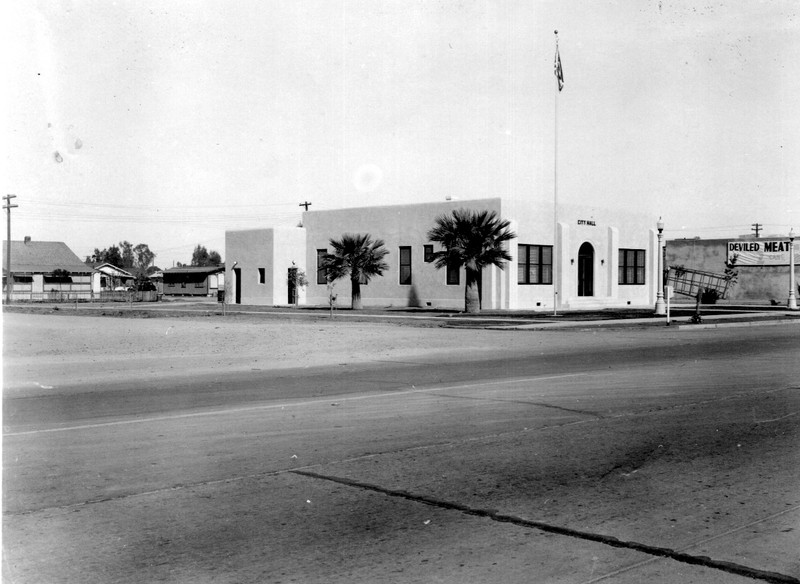Original Chandler City Hall
Introduction
Text-to-speech Audio
Images
Chandler's First City Hall

Backstory and Context
Text-to-speech Audio
As early as 1920 the townspeople of Chandler petitioned the Maricopa County Board of Supervisors for funding to build a jail. At the time, Chandler was paying roughly $700 annually to transport prisoners to Mesa. The Supervisors agreed to the request, and appropriated $5,000 for the construction of a jail to serve the “Chandler District.” After several months of inaction, however, the appropriation was rescinded.
In August of 1922, Chandler tried again. This time, the project was expanded to include the jail and other municipal necessities such as offices, courtrooms, and council chambers. After initially turning down the request, the board of supervisors finally agreed to fund half of the project if Chandler, now an incorporated town, agreed to fund the other half.
With funding secured, the town turned to the question of where to site the new building. Initially it was believed the City Hall could be built in the southeast corner of the town’s central park. Two weeks later, a committee recommended a site on the eastern side of Arizona Avenue, roughly where City Hall stands today. Ultimately, it was decided that it would be constructed on the northwest corner of Chicago Street and Arizona Avenue.
Meanwhile, during the search for a site a separate group of Chandler residents worked to acquire jail cells for the town which could be built into the city hall building. The search ended in Solomonville, the former seat of Graham County. Shortly before the county seat was moved to Safford, a new jail had been built in Solomonville. Now the town had no use for the nearly brand new jail cells and agreed to sell them to Chandler, with the agreement that Chandler would pay to have them moved.
During a town council meeting at the end of December, 1922, architect Jacob Knapp was contracted to design the new city hall. Just one week later, Knapp had submitted his plans and the town council opened bids for construction of the new facility. Knapp bragged to the Chandler Arizonan that the building “would be the last word in modern construction….constructed of brick throughout and the highest of concrete brick will be used.” Designed in a Roman classical style, the building featured a court room, offices for the Mayor and city clerk, and the city’s new jail. The ceilings were 12 feet high, with ornamental steel and ceiling fans. The exterior of the building featured broad cornices to shade the windows, and the whole building was to be surrounded by grass and shrubs.
By the beginning of February, 1923, the town had received four bids. Unfortunately, all four came in over budget. After making some changes, including lowering the quality of the bricks to be used and decreasing the paint from three coats to two, the town selected W.M. Moore’s $8,000 bid.
After three months of construction, the new city hall was dedicated on May 29. At high noon that day a luncheon was served. The entire town was invited to attend for the low price of 50 cents a person. Al Strauss, who was well known in Chandler for playing piano accompaniment with silent movies, was hired to entertain during the luncheon. Afterwards, dignitaries including Mayor George Armstrong, Chamber of Commerce President Art Price, members of the Maricopa County Board of Supervisors, Phoenix Mayor Louis Whitney, and Dr. Alexander J. Chandler gave speeches. The Arizonan proclaimed the celebration “one of real joy and the people of Chandler are all for it with a vim that spells success.”
Over the decades, City Hall became too small to meet the needs of the growing community. Finally, in 1970 a new municipal complex was designed and constructed on the corner of Buffalo and Delaware Streets. It is believed that the old City Hall was bulldozed into its own basement. All that is left today is a portion of a concrete pad and a lone palm tree that once stood next to the front door.
